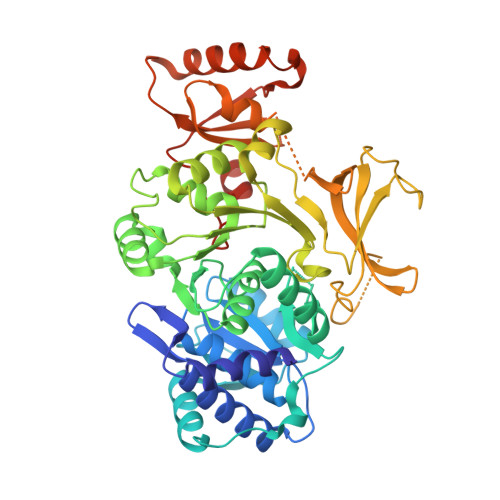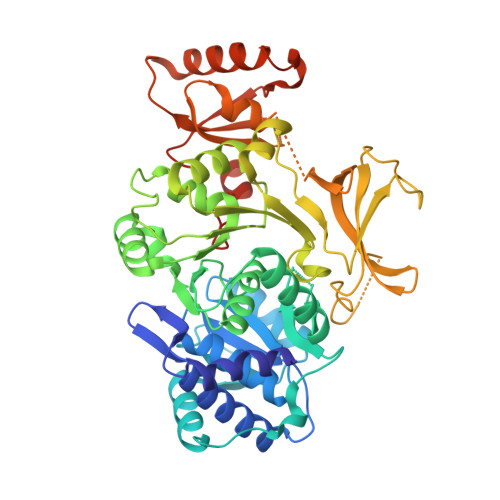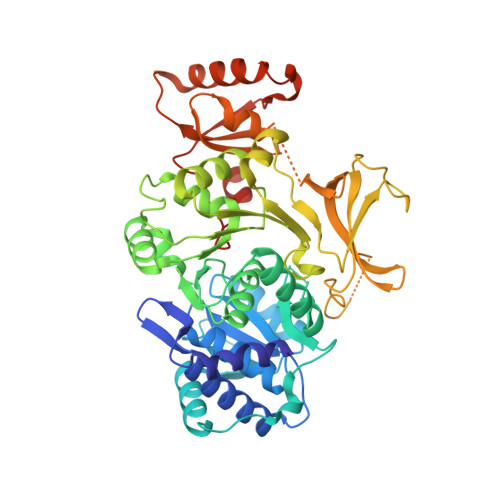Thiolation-enhanced substrate recognition by D-alanyl carrier protein ligase DltA from Bacillus cereus.
Du, L., Luo, Y.(2014) F1000Res 3: 106-106
- PubMed: 25285205
- DOI: https://doi.org/10.12688/f1000research.4097.1
- Primary Citation of Related Structures:
4PZP - PubMed Abstract:
D-alanylation of the lipoteichoic acid on Gram-positive cell wall is dependent on dlt gene-encoded proteins DltA, DltB, DltC and DltD. The D-alanyl carrier protein ligase DltA, as a remote homolog of acyl-(coenzyme A) (CoA) synthetase, cycles through two active conformations for the catalysis of adenylation and subsequent thiolation of D-alanine (D-Ala). The crystal structure of DltA in the absence of any substrate was observed to have a noticeably more disordered pocket for ATP which would explain why DltA has relatively low affinity for ATP in the absence of any D-alanyl carrier. We have previously enabled the thiolation of D-alanine in the presence of CoA as the mimic of D-alanyl carrier protein DltC which carries a 4'-phosphopantetheine group on a serine residue. Here we show that the resulting Michaelis constants in the presence of saturating CoA for both ATP and D-alanine were reduced more than 10 fold as compared to the values obtained in the absence of CoA. The presence of CoA also made DltA ~100-fold more selective on D-alanine over L-alanine. The CoA-enhanced substrate recognition further implies that the ATP and D-alanine substrates of the adenylation reaction are incorporated when the DltA enzyme cycles through its thiolation conformation.
Organizational Affiliation:
Department of Biochemistry, University of Saskatchewan, Saskatoon, Saskatchewan, S7N 5E5, Canada.


















